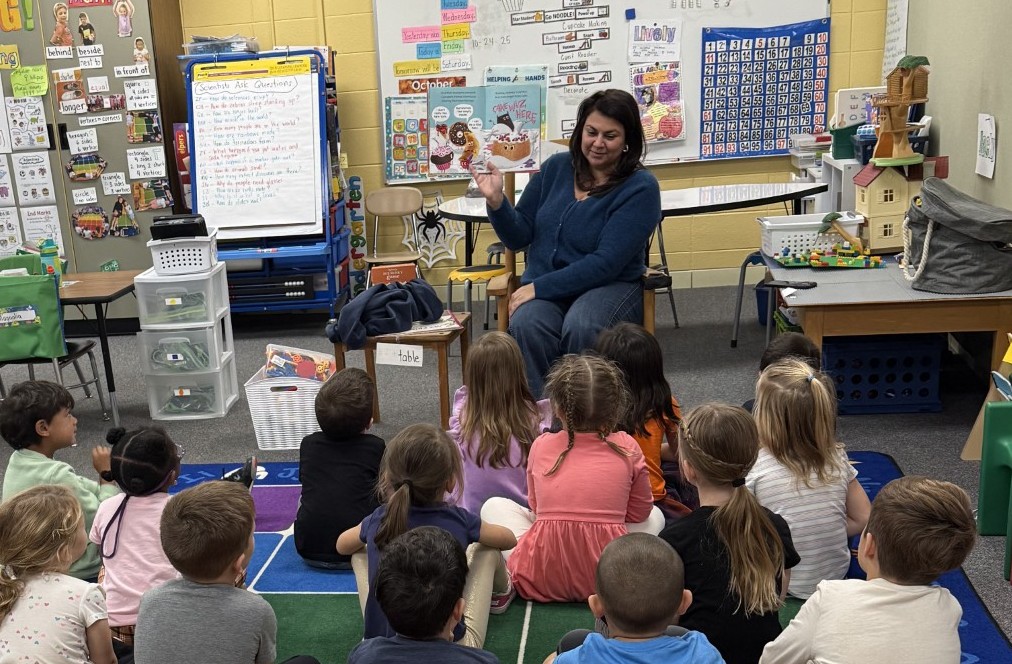How to Empower Educators through Practical AI Solutions
Learn how you can get back some of your valuable time with AI, and what you can do to bring AI tools into your school or district.

Teachers are tasked with educating students to the best of their abilities. Sometimes that ability is impeded by the amount of work a teacher has to do outside of the classroom.
However, with the advent of AI, new tools now have the unique ability to take care of many time-consuming tasks teachers face on a daily basis. It can be difficult to know what tools can be used for or whether these should be used in a professional educational setting. If implemented in the right way, however, AI has the opportunity to lighten the workload and create more time to reinject humanity into their interactions with their students and the community they serve.
Here we speak with Brett Roer (CEO and Founder of Amplify and Elevate Innovation), Maximillian Re-Sugiura (principal of High School of Art and Design in New York City), and Dr. Andy Szeto (Academic Policy, Performance, and Assessment Lead for NYC Department of Education) about how AI can have a transformative impact on educational leadership.
These gentlemen originally presented this topic at the NYC Tech Summit 2025.
Knowing What AI Can Help You With
In order to understand what AI can help teachers accomplish, it is important to understand what help is needed. Tasks such as creating curriculums and lesson plans, assigning seating for students, making quizzes and tests, etc., can all be challenging at times. Roer suggests that the best way to introduce AI into a teacher’s professional life is by identifying general problems to start.
“I push past any skepticism people have about AI by saying, ‘What if AI doesn’t exist, what are the problems you’re facing as a district, as a school, or in your personal work-life balance?’” says Roer. “These problems probably existed pre-AI, so let's start naming the problems. Is the issue that you don’t have enough time, you don’t have enough capacity?”
Re-Sugiura agrees it makes sense to start by identifying the pain points, suggesting a self-audit. “It’s really helpful for folks to do some kind of activity tracker for a standard work week,” he says. “How many hours you’re using, how it’s cutting into your own time, and then you have to pare down the things that you know you can automate, as opposed to the things that you don’t know how to do, because there’s going to be a learning curve.”
Tools and ideas to transform education. Sign up below.
Understanding the Ins and Outs of AI
Once you have a clear understanding of the problem you’re trying to solve, knowing whether you can use AI to solve it is the next step. AI tools are extremely popular, and many of them solve similar problems, so it helps to gather as much information about these tools as possible. Knowing the capabilities as well as the limitations of any platform can help to inform you on what would be the best ways to have AI help.
“There’s a commitment to knowing what AI can do for you and what AI cannot [do],” says Szeto. “I think there’s some fearmongering with AI these days. Some teachers will tell you that AI can’t [be used] for a lesson plan.”
With so many variables, taking the time to perform due diligence on the tools you mean to use in the educational space is time well spent.
How to Implement AI in Your School or District
When it comes to introducing an AI into your school or district, there are many factors to consider in the process. Knowing your state’s AI policies and guidelines as well as your district’s is the first step.
“Make sure you’re allowed to [implement AI],” says Re-Sugiura. “This is good [because you need to have] an open dialogue with state municipalities and then, ultimately, district leadership when it comes to what kind of programs schools are saying they are comfortable working with.”
Knowing what’s acceptable to use and whether it's covered under any guidelines is key, especially when it comes to data privacy. Platforms should be COPPA- and FERPA-compliant as well. Once an AI solution has been properly vetted, you can then attach it to the problem you’re trying to solve. And with an AI solution to your problem, you’ll be able to recover significant time that you can put into other endeavors.

Michael Millington is a senior staff writer for Tech & Learning. A writer and editor with over a decade of experience, his focus on bringing actionable information to those in need is the driving force behind his work. When not researching new advancements in technology, Michael likes to practice his Italian and train his dog Cyril.
